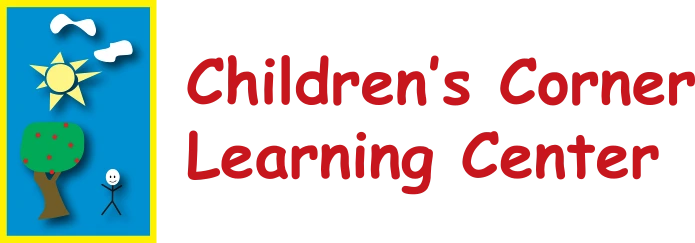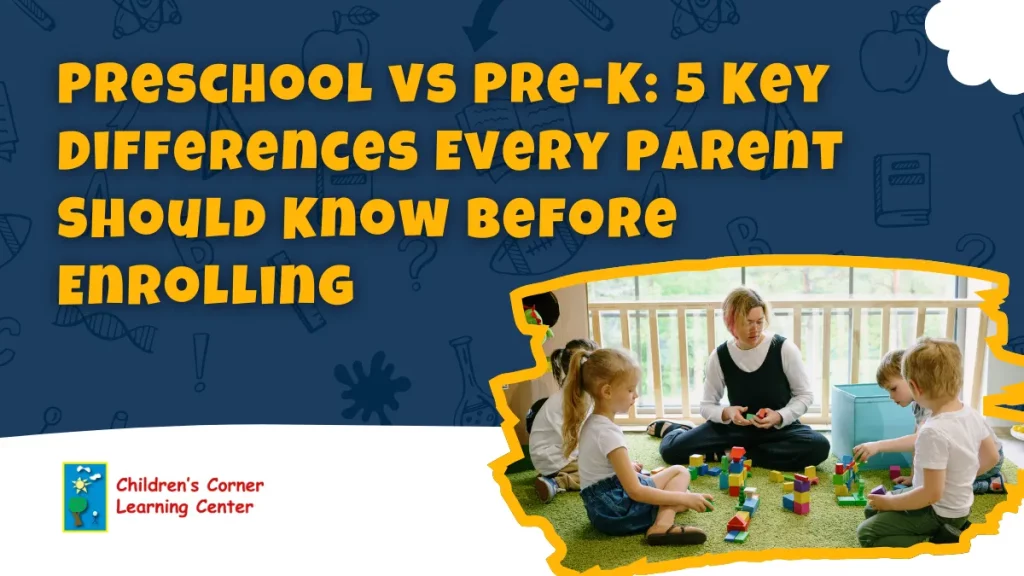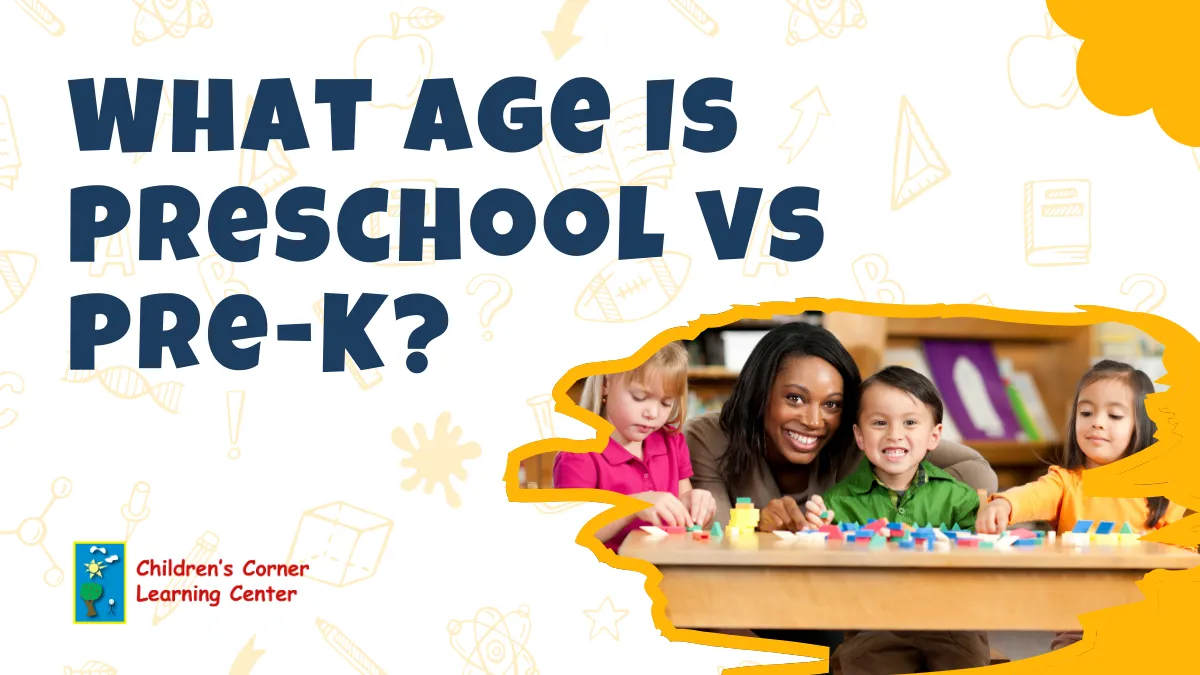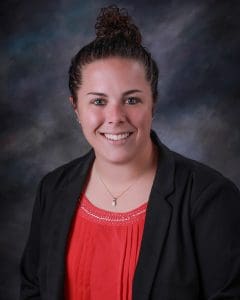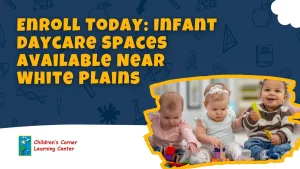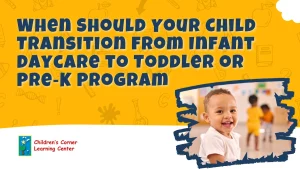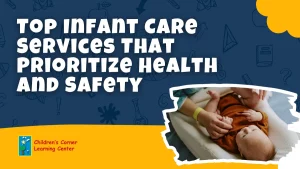Preschool vs pre-k is a common comparison parents encounter when exploring early childhood education options. While both programs support foundational learning and social development, they are designed with distinct age groups, readiness goals, and curriculum approaches in mind. Understanding the variations between preschool and pre-kindergarten can help families make wise choices that align with their child’s needs and developmental stage.
Each program offers unique benefits, from academic structure to classroom expectations. This article highlights five essential differences every parent should consider before enrolling, ensuring a confident step toward their child’s educational path.
Understanding the Difference Between Preschool and Pre-K
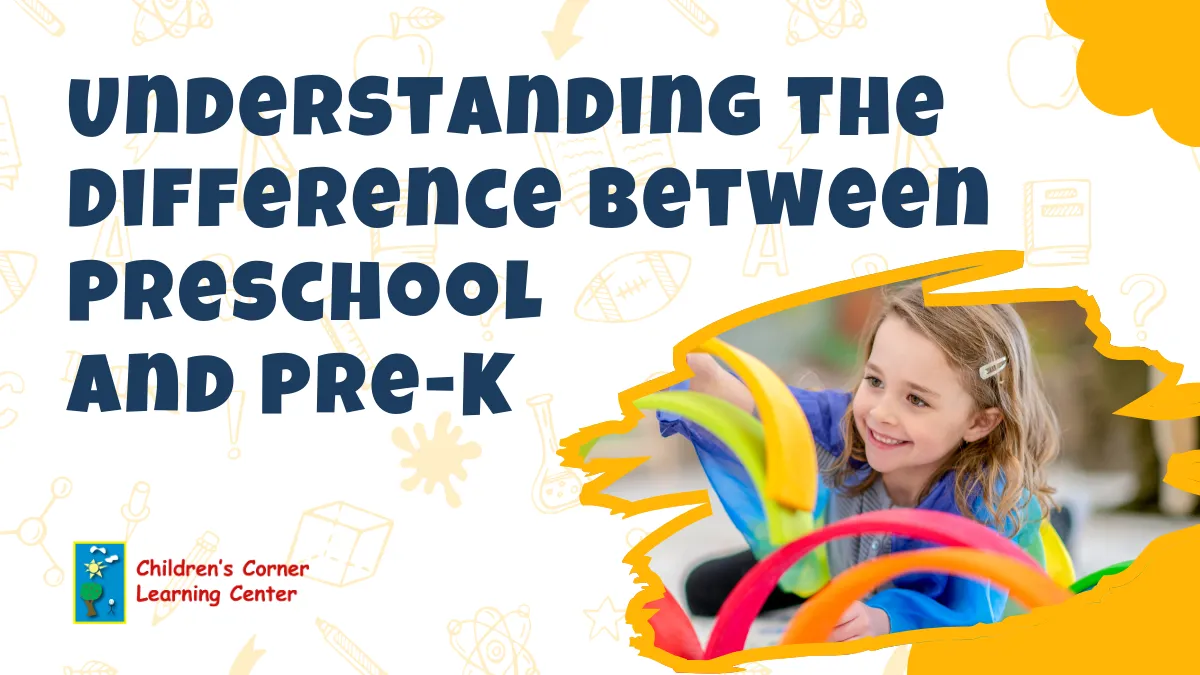
The difference between preschool and pre-k lies primarily in each program’s developmental focus and educational objectives. While both aim to build foundational skills and prepare young children for school, their structure, goals, and teaching methods vary in several important ways.
Program Objectives and Readiness Goals
Preschool typically introduces children to structured learning through play, exploration, and routine. It focuses on helping children develop basic social, emotional, and cognitive skills in a supportive setting.
On the other hand, pre-kindergarten is more academically structured and intended to prepare children for the transition into kindergarten. It emphasizes school readiness, including early literacy, math, and problem-solving skills.
Curriculum Structure and Learning Activities
In preschool programs, child-led activities with flexible schedules often guide learning. Children engage in creative play, story time, music, and art to develop motor skills and early language abilities.
Pre-k programs introduce more structured activities that promote critical thinking and independent learning. Lessons often follow a daily schedule with specific times for literacy, numeracy, science, and group work.
Key Differences at a Glance:
- Age Group: Preschool is generally for children ages 2½ to 4; pre-k is for 4- to 5-year-olds nearing kindergarten.
- Academic Focus: Preschool emphasizes play-based learning; pre-k incorporates more formal academic lessons.
- Daily Schedule: Preschool offers flexible routines; pre-k follows a more structured academic day.
- Skill Development: Preschool targets basic motor, social, and language skills; pre-k enhances literacy, math, and critical thinking.
- Kindergarten Readiness: Pre-k provides more direct preparation for the expectations of elementary school.
By understanding these distinctions, parents can make an informed decision about which environment best suits their child’s current stage of development. Each program plays a vital role in early learning, but its approaches and outcomes differ meaningfully.
What Age Is Preschool vs Pre-K?

One of the most important considerations for families is understanding what age preschool vs pre-k is. While both programs cater to early learners, they are designed for different stages of child development and follow age-based eligibility guidelines that support appropriate learning experiences.
Preschool Age Range and Readiness
Preschool is typically intended for children between the ages of 2½ and 4. Children in this age group are just beginning to explore structured group environments. Preschool introduces foundational routines and encourages curiosity, helping children gain independence, improve motor skills, and develop early language and social abilities. Most programs require children to be toilet trained and able to follow basic instructions in a group setting.
Enrollment Age Guidelines
Though age ranges may vary slightly by state or program, most centers follow these general guidelines:
- Preschool: Starts as early as 2 years and 6 months; typically ends by age 4
- Pre-K: Begins at age four and continues until the child is eligible for kindergarten (usually age five by a specific cutoff date)
Key Differences by Age Group:
- Emotional Readiness: Younger preschoolers may need more emotional support as they separate from caregivers.
- Cognitive Abilities: Pre-k children are developmentally ready for pre-literacy and basic math concepts.
- Social Skills: Preschoolers focus on learning to share and cooperate; pre-k students practice teamwork and problem-solving.
Choosing the right program based on your child’s age ensures they are placed in an environment that aligns with their developmental stage, promoting growth in a nurturing and age-appropriate setting.
Is Pre-K Better Than Preschool?
Parents often wonder if pre-k is better than preschool when planning their child’s early education. The answer depends on a child’s developmental stage and readiness rather than one program being universally better than the other. Both preschool and pre-k serve valuable yet distinct purposes in early childhood education, supporting different growth phases.
Evaluating Academic Benefits
Pre-k programs are typically more rigorous in terms of academic content. They include early literacy, numeracy, science, and problem-solving activities that mirror kindergarten expectations.
This makes pre-k highly beneficial for developmentally ready children who need more focused instruction. However, this does not make preschool less effective—preschool lays the critical groundwork for children to succeed in pre-k and beyond.
Choosing Based on Developmental Readiness
Rather than asking whether one is better, it is more appropriate to ask which program best suits the child’s current needs. Some children may thrive in preschool’s flexible, play-based environment, while others nearing school age may benefit more from the structured approach of pre-k.
Key Considerations for Parents:
- Age and maturity: Pre-k is ideal for children closer to kindergarten with greater attention spans.
- Learning style: Preschool supports learners who benefit from imaginative play and hands-on exploration.
- School goals: Pre-k aligns closely with kindergarten benchmarks, offering a more academic focus.
- Emotional readiness: Children needing more time to adjust socially may benefit from preschool before moving to pre-k.
In conclusion, pre-k is not inherently better than preschool. Both programs offer essential developmental support tailored to specific age groups and learning stages. The best choice depends on each child’s needs, maturity, and growth readiness.
Teacher Qualifications and Instructional Methods
The quality of early childhood education is closely tied to teacher qualifications and instructional methods. In preschool and pre-k programs, educators’ expertise and strategies are vital in shaping a child’s early learning experience. While the expectations are similar in many ways, there are key distinctions based on the age group served and the educational objectives of each program.
Professional Credentials and Training
Preschool and pre-k teachers must meet state or program-specific certification standards. Most educators hold degrees or certifications in early childhood education and have specialized training in child development, safety, and classroom management. In high-quality programs, ongoing professional development is emphasized to ensure teachers stay current with educational best practices.
Classroom Experience and Specializations
Preschool teachers are trained to nurture younger children who are developing foundational social and motor skills. They often specialize in guiding children through transitions, introducing basic routines, and encouraging independence.
Pre-k educators, in contrast, are more focused on academic readiness and may have additional training in early literacy, numeracy, and behavior management techniques appropriate for older children preparing for kindergarten.
Key Elements of Instructional Methods:
- Age-appropriate learning materials
- Individualized attention and small group activities
- Integration of social-emotional learning
- Clear routines to support predictability and growth
Families can select programs with well-qualified teachers and age-aligned instructional methods to ensure their children receive meaningful and developmentally appropriate support throughout their early education journey.
Choosing the Right Program for Your Child’s Needs
Selecting between preschool and pre-k requires thoughtful consideration of your child’s developmental stage, learning style, and emotional readiness. Each child is unique, and understanding their needs is essential in determining which program will provide the most beneficial early learning experience.
Evaluating Learning Style and Personality
Children who enjoy imaginative play, sensory activities, and unstructured exploration may thrive in preschool. Those curious about letters, numbers, and problem-solving may benefit from the more academic structure of pre-k. Observing how your child interacts with others and responds to routines can help guide your decision.
Practical Considerations for Families
When exploring programs, families should consider the following:
- Age eligibility requirements and local kindergarten cutoff dates
- Class size and teacher-to-child ratio
- Daily schedule and curriculum structure
- Accreditation and teacher qualifications
- Opportunities for parent involvement and communication
Touring and Asking the Right Questions
Visiting schools and observing classrooms in action provides valuable insight. Ask about how teachers support different learning styles, manage transitions, and prepare children for the next stage. Discuss how progress is monitored and communicated to families.
Choosing between preschool and pre-k should align with your child’s readiness and your family’s educational goals. The right environment will nurture confidence, curiosity, and a love of learning.
Conclusion
Understanding the distinctions between preschool and pre-k empowers parents to make confident, informed decisions about their child’s early education. Each program offers valuable benefits tailored to a specific growth stage, from developmental readiness and age eligibility to teacher expertise and instructional methods. By carefully evaluating your child’s needs and exploring your options, you can select a program that fosters academic progress and personal development in a nurturing environment.
To find the right fit for your child, schedule a visit and experience our classrooms firsthand. Call (800) 933-7757 or visit www.childrenscornergroup.com/book-a-tour to book a tour today.
